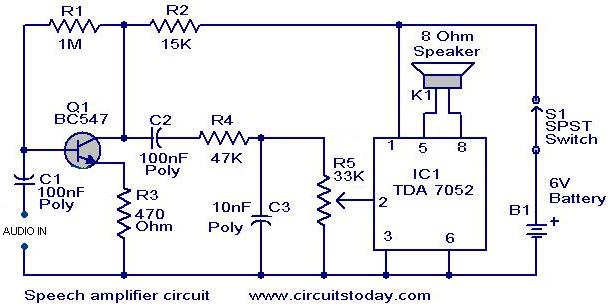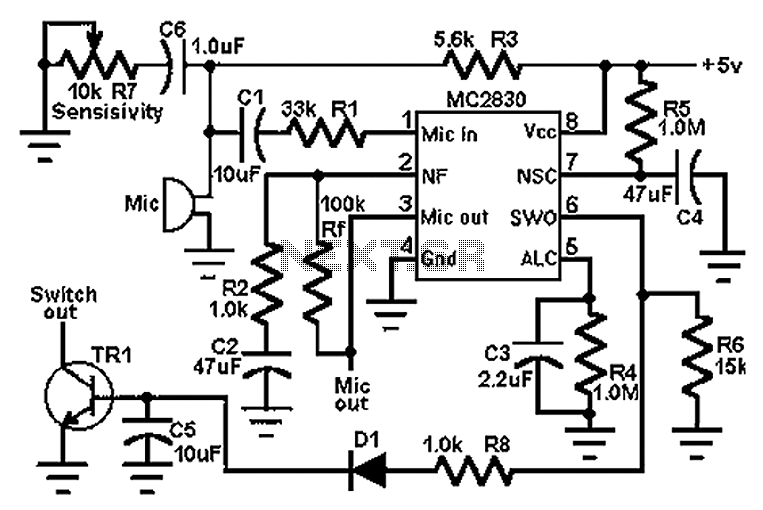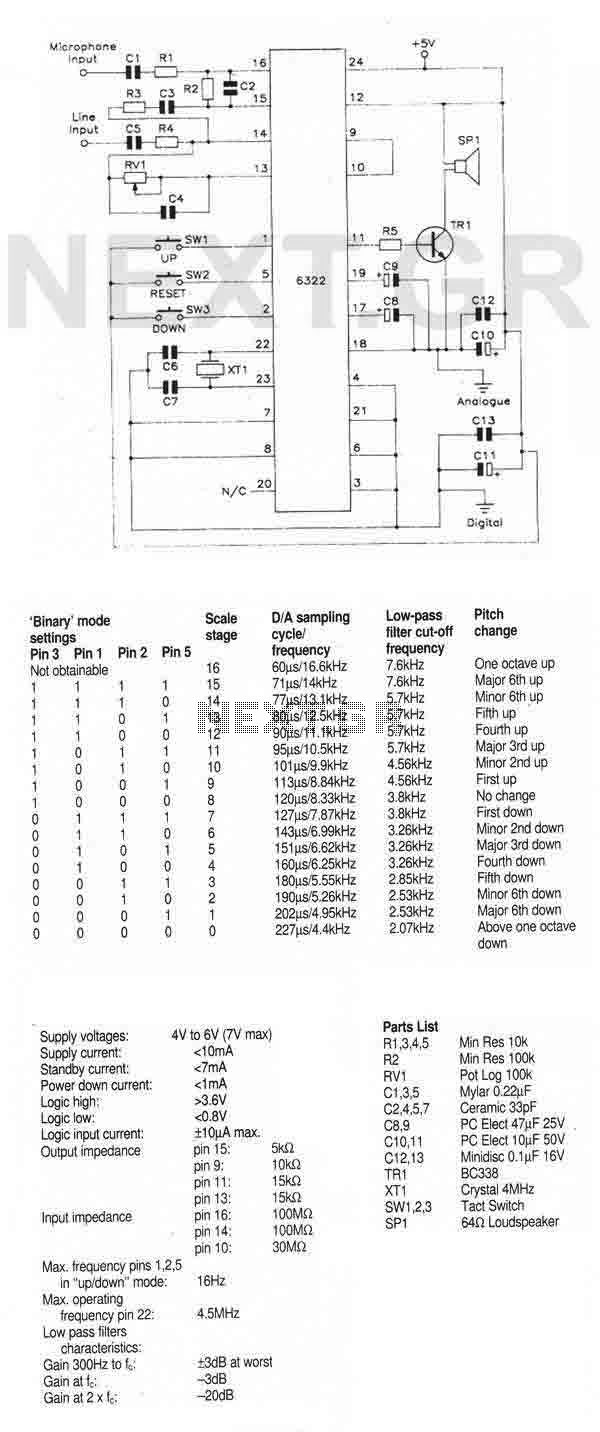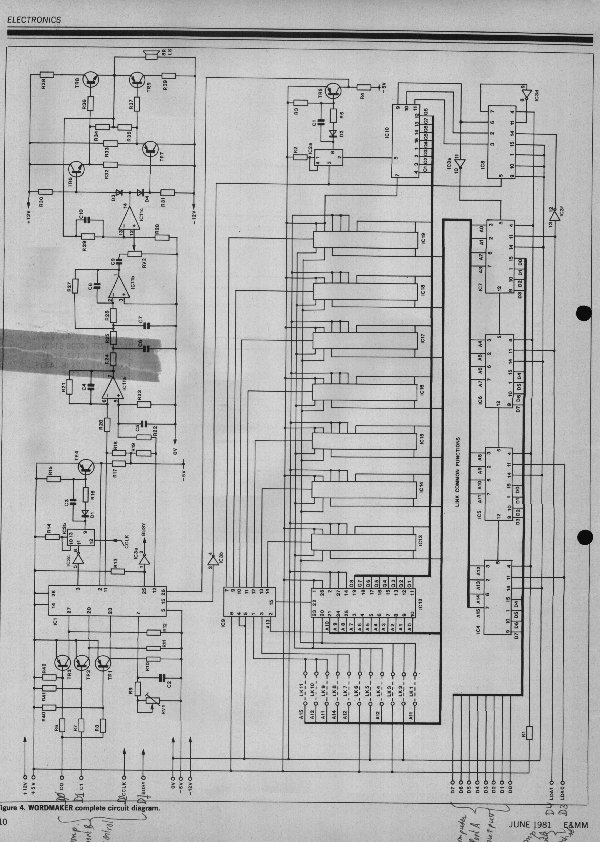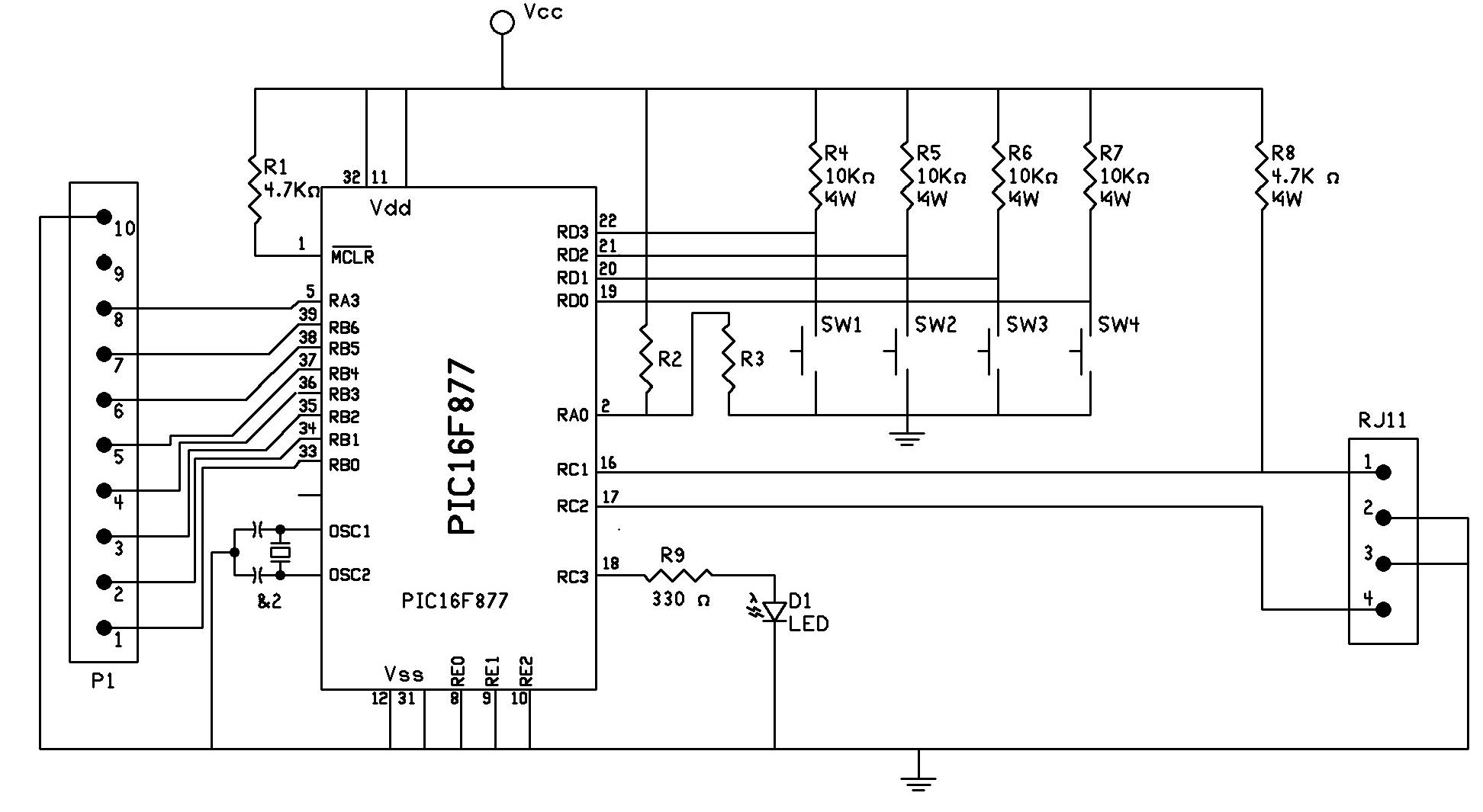
Speech with XR-T5995
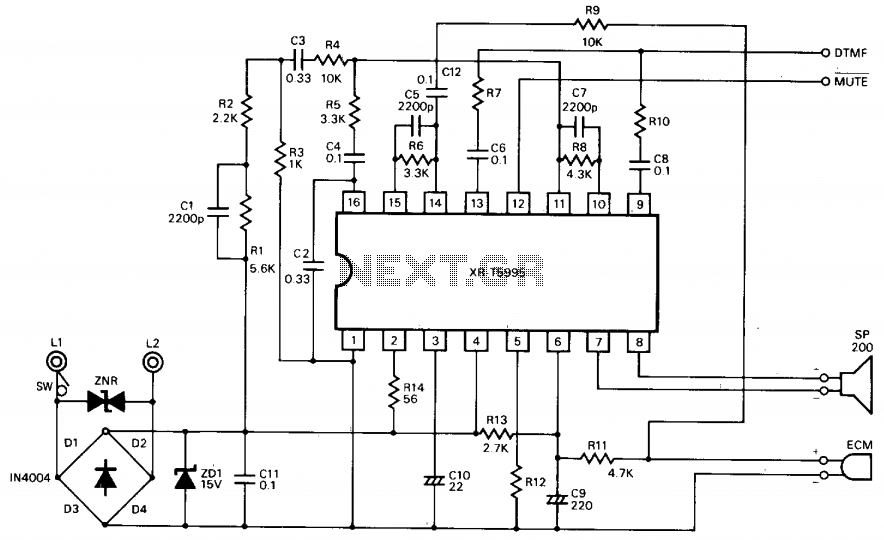
The XR-T5995 Speech Network is a monolithic integrated circuit specifically designed for implementing a low-cost telephone circuit. It is designed to use an electrodynamic microphone and electromagnetic receiver to replace a carbon microphone and telephone network hybrid.
The XR-T5995 Speech Network serves as a versatile solution for modern telecommunication applications. Its monolithic design allows for reduced component count and simplified circuit layout, which in turn lowers manufacturing costs and enhances reliability. The integration of an electrodynamic microphone enables improved sound quality and sensitivity compared to traditional carbon microphones, which are often limited in performance.
The use of an electromagnetic receiver further enhances the system by providing a more efficient means of converting electrical signals back into sound. This design choice not only improves audio fidelity but also optimizes the overall power consumption of the circuit, making it suitable for battery-operated devices.
In terms of connectivity, the XR-T5995 is engineered to interface seamlessly with standard telephone line voltages and impedances, ensuring compatibility with existing telephone infrastructure. The device also incorporates features that facilitate easy integration into various applications, such as intercom systems, public address systems, and other voice communication devices.
Overall, the XR-T5995 Speech Network is a significant advancement in telephone circuit design, offering a practical solution that meets the demands of contemporary voice communication while maintaining cost-effectiveness and simplicity in implementation.The XR-T5995 Speech Network is a monolithic integrated circuit specifically designed for implementing a low cost telephone circuit. It is designed to use an electrodynamic microphone and electromagnetic receiver to replace a carbon microphone and telephone network hybrid. 🔗 External reference
The XR-T5995 Speech Network serves as a versatile solution for modern telecommunication applications. Its monolithic design allows for reduced component count and simplified circuit layout, which in turn lowers manufacturing costs and enhances reliability. The integration of an electrodynamic microphone enables improved sound quality and sensitivity compared to traditional carbon microphones, which are often limited in performance.
The use of an electromagnetic receiver further enhances the system by providing a more efficient means of converting electrical signals back into sound. This design choice not only improves audio fidelity but also optimizes the overall power consumption of the circuit, making it suitable for battery-operated devices.
In terms of connectivity, the XR-T5995 is engineered to interface seamlessly with standard telephone line voltages and impedances, ensuring compatibility with existing telephone infrastructure. The device also incorporates features that facilitate easy integration into various applications, such as intercom systems, public address systems, and other voice communication devices.
Overall, the XR-T5995 Speech Network is a significant advancement in telephone circuit design, offering a practical solution that meets the demands of contemporary voice communication while maintaining cost-effectiveness and simplicity in implementation.The XR-T5995 Speech Network is a monolithic integrated circuit specifically designed for implementing a low cost telephone circuit. It is designed to use an electrodynamic microphone and electromagnetic receiver to replace a carbon microphone and telephone network hybrid. 🔗 External reference
